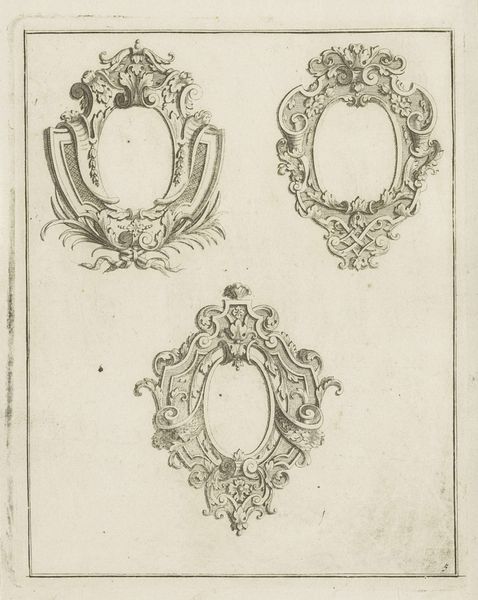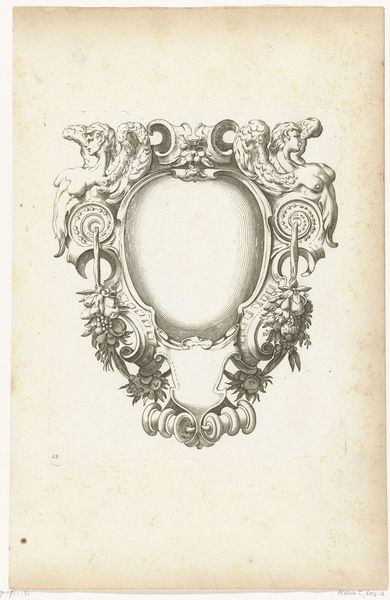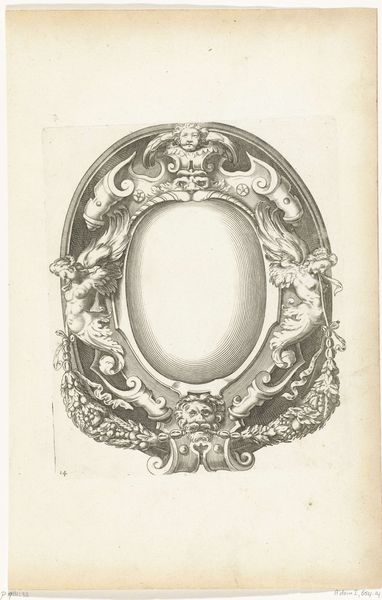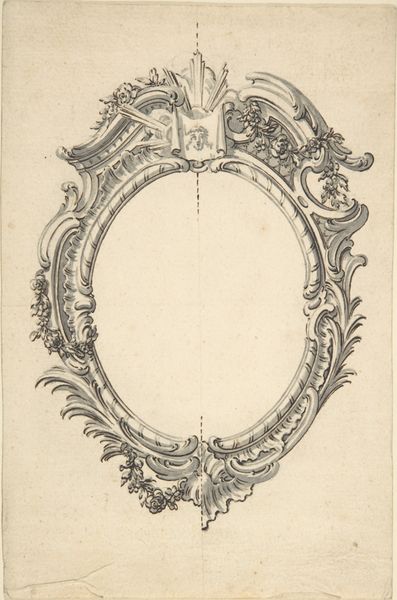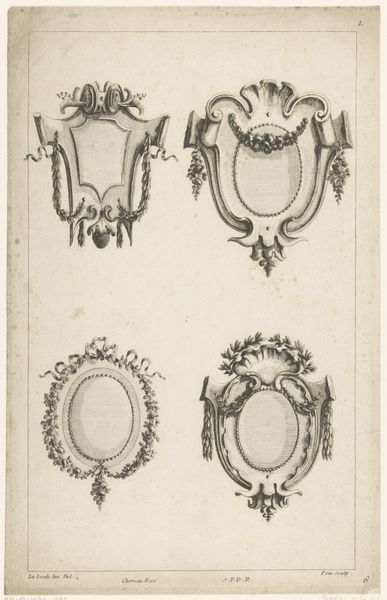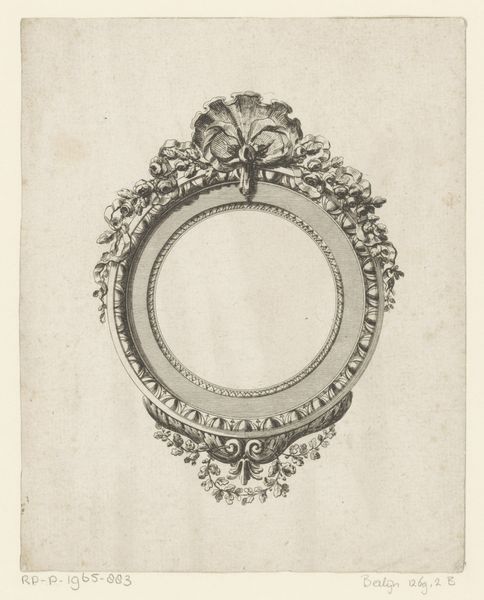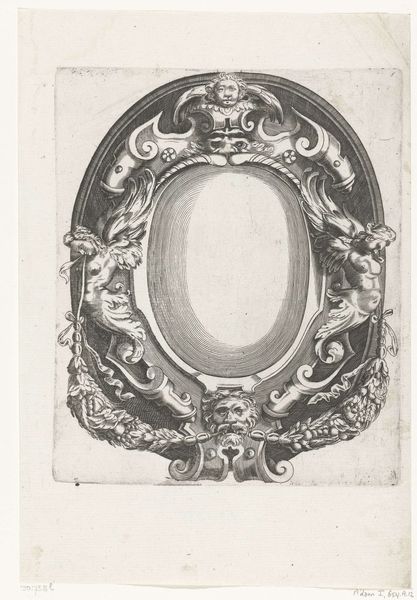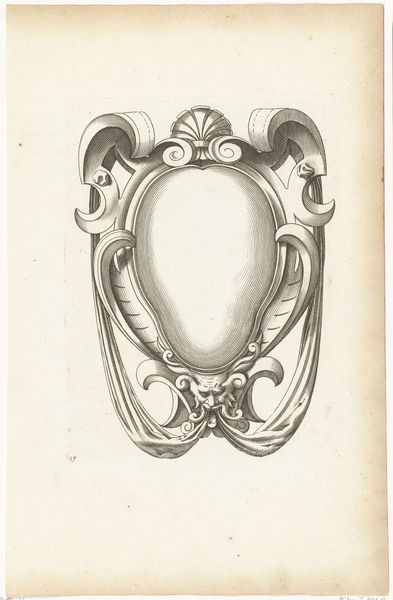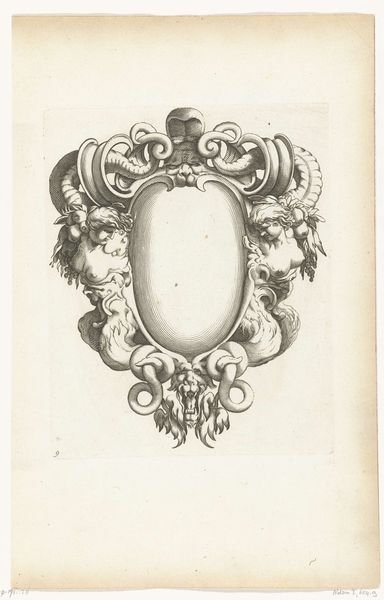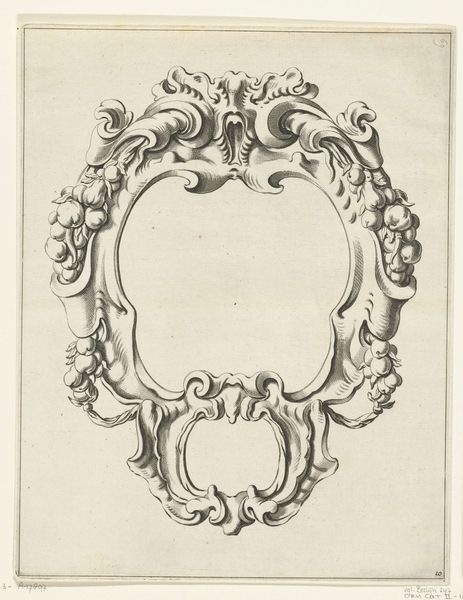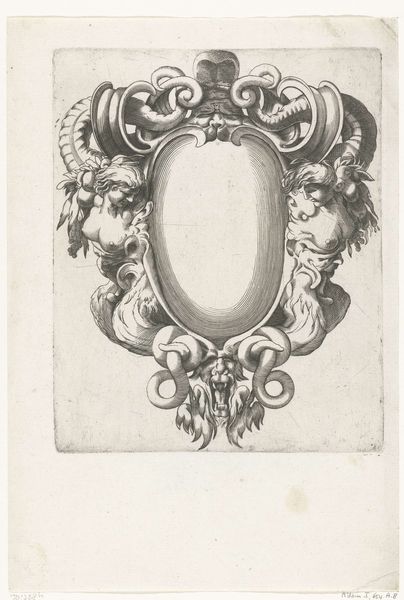
drawing, paper, engraving
#
drawing
#
pencil sketch
#
old engraving style
#
paper
#
form
#
line
#
decorative-art
#
engraving
#
rococo
Dimensions: height 166 mm, width 81 mm
Copyright: Rijks Museum: Open Domain
Editor: This work, titled "Twee ovale omlijstingen," created in 1768 by P.J. Bertren, presents two oval frames rendered in engraving. They feel delicate, almost like a blueprint for aristocratic décor. What do you make of it? Curator: The labor of engraving, here, is paramount. Look at the meticulous tooling – the repeated action required to transfer these designs to paper. We often divorce "high art" from craft, but the engraver's skill, the production of these objects, highlights their inherent value as material culture, part of consumption. How do you think these would be used? Editor: Perhaps as designs for mirrors or portraits? Were these accessible to everyone, or mainly a luxury item? Curator: Exactly! Their purpose likely extended to luxury goods. Think about the social context. The Rococo style signified wealth and taste, an association heavily reliant on specialized craftsmanship. Consider the source of the materials – the paper itself, the metal of the engraving tools. These materials and processes directly reflect 18th-century production and trade networks. Does it change how you see it? Editor: Absolutely. Thinking about the access to materials and level of artisanal skills makes me consider its position as more than just decorative art, but as evidence of labor and commerce. Curator: Precisely! By centering on its means of production, we begin to understand the art not as solely aesthetic, but a product deeply embedded in a specific material reality. Editor: I'll definitely look at decorative art differently now! Thank you.
Comments
No comments
Be the first to comment and join the conversation on the ultimate creative platform.

